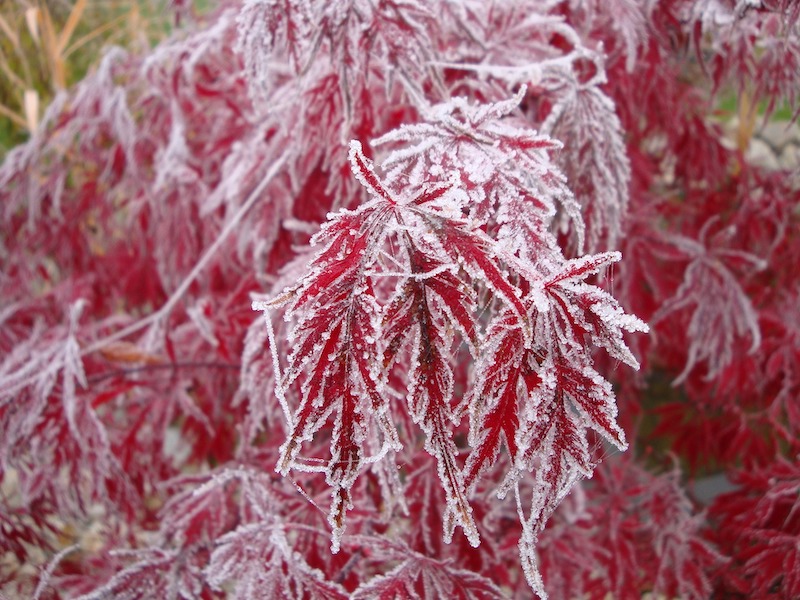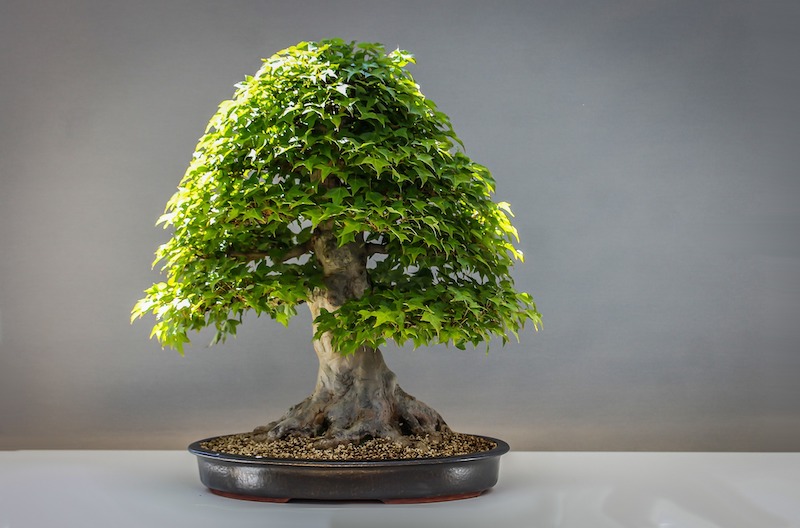If you are looking for a beautiful landscape tree that can survive the winter, Japanese maples, Acer palmatum, are for you. Hardy to USDA zones 5-9, these deciduous trees are adapted to chilly temperatures, undergoing a dormancy period during the coldest months. With some care and maintenance, your Japanese maples will thrive throughout all four seasons.

Protecting Japanese Maples in Winter
Japanese maples may need protection in winter to prevent damage from cold temperatures, frozen soil, and winter winds. Young trees and trees grown in pots are more prone to winter damage than mature, established trees growing in the ground. Often, the continuous cycle of freezing and thawing throughout winter can lead to dieback. Heavy snow loads can break weak branches, and insufficient moisture can lead to cracking of the bark. Late spring frosts or early breakage of dormancy are perhaps the biggest causes of cold weather dieback. Buds and emerging leaves may die entirely. Pruning, watering, mulching, covering, and sheltering are all ways to protect Japanese maples in winter.
Cutting Back Japanese Maples For Winter
While Japanese maples do not need to be cut back to survive winter, dead or damaged branches should be pruned off before winter. These branches are at an increased risk of falling due to heavy snow loads, which can cause injuries or damage to property. Winter is also a great time for structural pruning of Japanese maples, as the lack of leaves makes it easier to view and shape the branching habit.
Japanese Maples Winter Care in Pots
Although most Japanese maples are hardy to zones 5-9, Japanese maples planted in containers should only be grown in zones 6-9. Potted Japanese maples need to be placed in a sheltered location away from harsh, drying winter winds. An unheated garage, shed, or porch are all good places to overwinter Japanese maples in containers. If you are unable to move your plant to a sheltered location, wrap the pot and tree with burlap, which will protect the tree from the wind and cold air. Apply a layer of mulch over the roots as well.
Watering Japanese Maples in Winter
Watering Japanese maples is one of the most important ways to protect them through winter, as insufficient moisture levels from frozen soil will lead to dieback. Deeply water your Japanese maples in late fall before the ground freezes. These trees will not need to be watered often once they turn dormant. Overwatering Japanese maples in winter can lead to root rot, so only water when the soil is completely dry. Potted Japanese maples may need to be watered more often. Mulching Japanese maples in fall can also help the soil retain moisture.
Growing Japanese Maples Indoors
It is not recommended that Japanese maples be grown indoors during the winter. These trees are native to temperate regions where they are used to a dormancy period initiated by factors such as temperature and day length. Moving these plants indoors may cause early budding and leafing. If Japanese maples are winter hardy to your region, they will be fine outdoors. If desired, you can place potted Japanese maples in an unheated, sheltered location throughout winter.

Steps To Care For Japanese Maples in Winter
Preparing Japanese maples for winter starts in fall before freezing temperatures arrive.
Step 1 - Water the tree well in late fall before the ground freezes. Monitor soil moisture levels throughout the winter, and water whenever the top few inches of soil are dry and the ground is not frozen.
Step 2 - Apply a 2-4 inch layer of wood-based mulch over the tree’s roots in fall. This helps to insulate the soil and conserve soil moisture. Avoid applying mulch near the trunk, as this can lead to rot.
Step 3 - Prune out any dead, diseased, or damaged branches.
Step 4 - Wrap smaller or younger trees with burlap to protect them from the wind and cold temperatures. Place several stakes into the ground, a few feet away from the tree. Wrap 2-3 layers of burlap around the stakes, securing them with staples. Remove the wrapping when the weather has warmed.
Step 5 - Move potted Japanese maples to a sheltered, unheated location, such as a garage or shed. If they begin to leaf out early, provide supplemental lighting until it is safe to move them outside again.
Step 6 - Avoid fertilizing in late summer or fall, as this can cause spurts of new, weaker growth that is more prone to winter damage.
Step 7 - After particularly heavy, wet snows, remove snow from the branches of your Japanese maples to prevent branches from breaking and falling.
Step 8 - Once spring arrives and the threat of freezing weather has passed, remove any branches or buds that have succumbed to winter.
 |
Lauren Youngcourt - Published 04-28-2023 |
